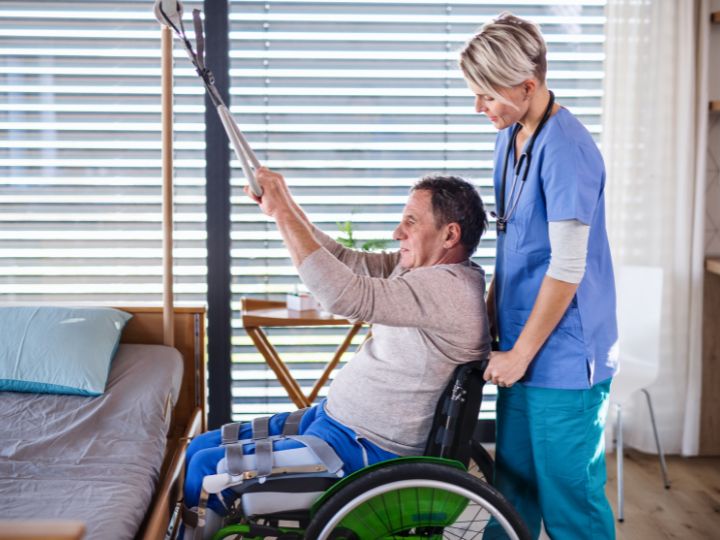Research consistently demonstrates that receiving therapy in familiar home environments leads to faster recovery, better outcomes, and enhanced quality of life compared to institutional settings. Your home isn’t just where you live—it’s your most powerful therapeutic partner.
The concept of “home field advantage” extends far beyond sports. In healthcare and rehabilitation, mounting evidence reveals that familiar environments provide profound psychological and physiological benefits that accelerate healing and functional improvement. Research consistently highlights a strong preference for older people to remain independent in their own homes, with overall benefits including improved quality of life by supporting independence, feelings of satisfaction and fulfilment, a healthier and safer living environment, comfort pertaining to the emotional value of home, connection to community and engagement in social networks.
The Science Behind Familiar Environment Benefits
Psychological Comfort Drives Physical Progress
Patients and healthcare providers appreciated how in-person home-based rehabilitation improved patient outcomes related to independence, overall functioning at home, and everyday use of assistive devices, which are facilitated by the interaction with the home environment implicit in these types of services. When therapy occurs in your own space, several powerful mechanisms work in your favor: Enhanced Self-Efficacy: An environment that allows individuals to control their choices and activities fosters a sense of autonomy, which is closely related to self-efficacy. Self-efficacy, an individual’s belief in their capabilities to execute behaviors necessary to make specific performance achievements, can significantly impact their motivation, well-being, and recovery outcomes. Reduced Anxiety and Stress: Positive associations in the environment, such as family keepsakes, photos, or familiar objects, can boost mood and create a sense of connection. This emotional stability creates optimal conditions for learning new skills and retaining therapeutic gains. Authentic Context for Recovery: The team members supported the patients’ prestroke experiences by inviting the patients to try their own solutions during the home rehabilitation sessions and between these sessions. The team members expressed that the patients’ growing trust in themselves created positive expectations, gave a feeling of continuity, and made it easier to see a “possible future” for them in their familiar contexts.Real-World Application Advantages
Home-based therapy offers unique opportunities that institutional settings simply cannot replicate: Immediate Transfer of Skills: When you practice mobility techniques on your own stairs, strength exercises with your actual furniture, or communication strategies with your family members, the skills transfer seamlessly to daily life. The research has demonstrated that many assumptions designers make may not be valid, including limiting a rehabilitation environment to sleeping and therapy spaces and expecting that this restrictive environment can support best practice rehabilitation. Environmental Modifications in Real-Time: The Community Aging in Place, Advancing Better Living for Elders (CAPABLE) program uses an interprofessional team (an occupational therapist, a registered nurse, and a handyman) to help participants achieve goals they set. It provides assistive devices and makes home repairs and modifications that enable participants to navigate their homes more easily and safely. After completing the five-month program, 75 percent of participants had improved their performance of activities of daily living. Family Integration: Involving patients and families in healthcare decisions about patient care results in better health outcomes, higher quality of care, lower health system costs, and improved patient safety. Home therapy naturally incorporates family members as active participants in your recovery process.Research-Backed Outcomes
The evidence supporting home-based therapy continues to grow stronger. The implementation of structured home-based rehabilitation programs may contribute to improve physical and psychological health-related outcomes among older adults by promoting functional capacity, self-care and knowledge.Measurable Improvements
Recent studies demonstrate significant advantages:- Quality of Life Enhancement: Participants’ quality of life significantly increased after Smart Home use. Two domains, “achieving in life” and “future security,” were also significantly improved after participating in the Smart Home technology program
- Functional Independence: A multidisciplinary home-based rehabilitation program for individuals with moderate neuromusculoskeletal disabilities resulted in substantial improvements in motor function. The program’s commitment to providing approximately 82 hours of therapy per patient over 4 months ensured that participants received intensive and individualized care
- Cost-Effectiveness: Research suggests that providing care at home to those aging in place may be a more cost-effective option. Research also shows that millions of health care associated infections occur in long-term care facilities in the U.S. each year. Aging in one’s home can provide an alternative to nursing homes or long-term care facilities, therefore protecting older adults from health care associated infections that could negatively impact their health


